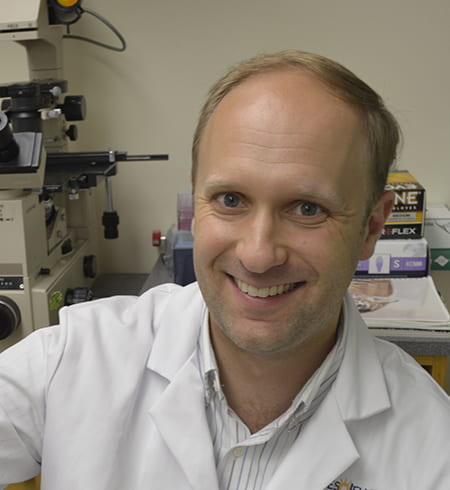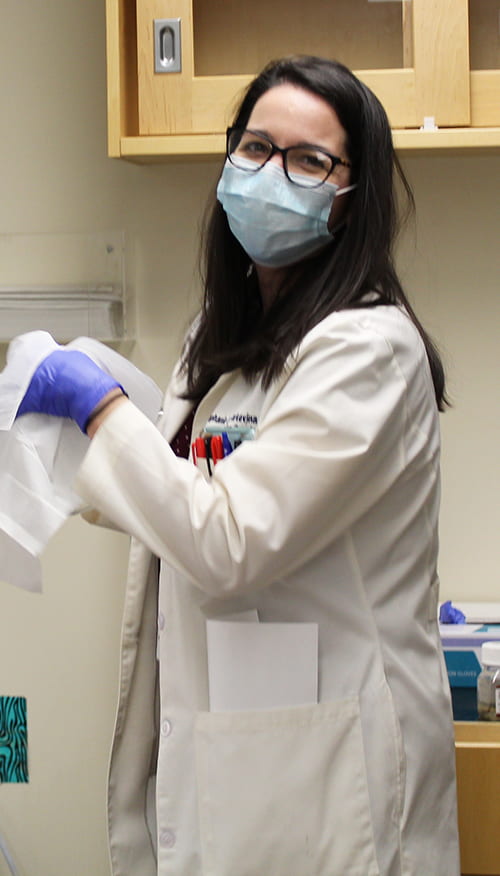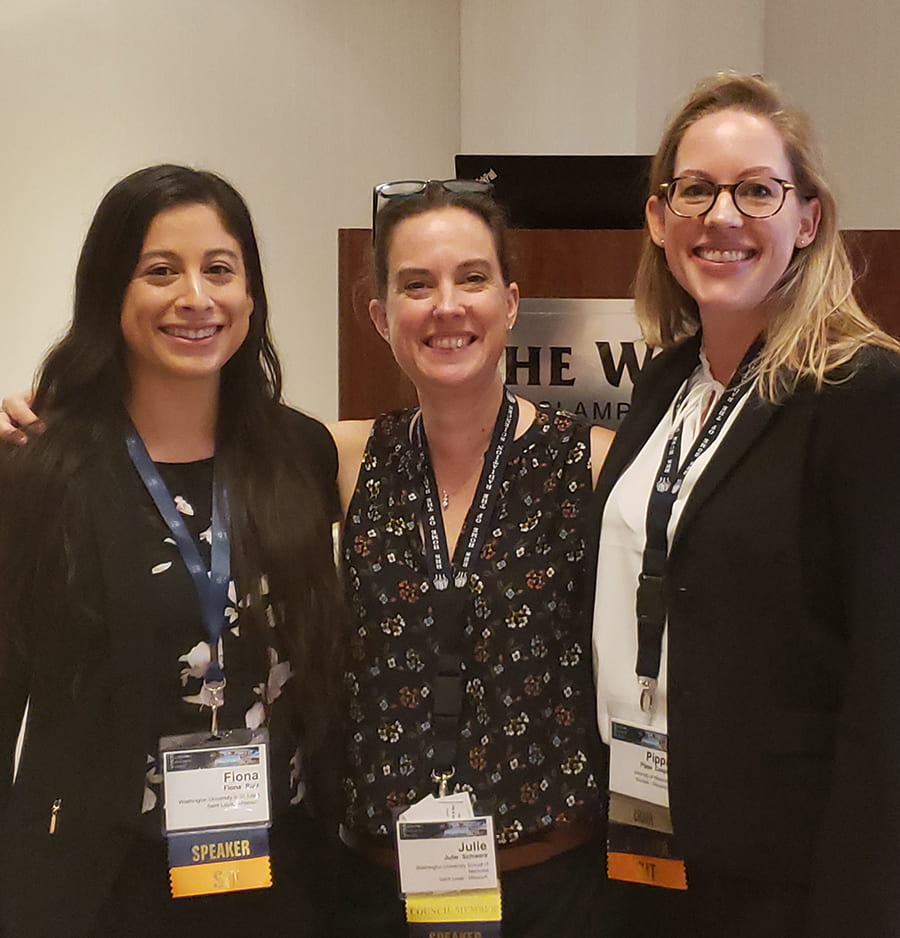The Holman Research Pathway is an alternative pathway leading to Board certification, designed for the exceptional trainee who has both strong clinical abilities and a background in research. Entry implies a commitment to basic science or clinical research. (Trainees who leave the research pathway must complete the standard five years of training, including four years of radiation oncology training.)
For more information, along with requirements and the application, refer to the American Board of Radiology’s website here.

Alumni Experiences

Awards received during Residency:
Award: Varex Imaging/RSNA Research Grant – Imaging Oxidative Stress in Cervical Cancer: A Potential Biomarker for Traditional and Novel Therapies; July 2017 – July 2018, Amount: $30,000, Role: P.I., Mentor: Julie Schwarz, MD, PhD
Award: ASTRO Residents/Fellows in Radiation Oncology Research Seed Grant – Redox Imaging in Cervical Cancer as a Predictive Biomarker for Traditional and Novel Therapeutics; July 2016 – June 2017; Amount: $25,000; Role: P.I., Mentor: Julie Schwarz, MD, PhD
John Floberg, MD, PhD
I was mentored through the Holman Research Pathway by Julie Schwarz. As a graduate student, I had focused on basic imaging science, and one of my primary goals in doing the Holman Pathway was to better connect cancer biology to imaging. Wash U and the Schwarz Lab provided a great opportunity to do this. I focused on 2 major projects, one evaluating potential PET imaging markers for oxidative stress, and the other establishing a relationship between FDG PET signal and a pro-inflammatory but immunosuppressive environment in cervical cancer. I greatly expanded my own scientific skill set through these projects, and had the opportunity to collaborate with a number of excellent investigators at Wash U, including Stephanie Markovina and Perry Grigsby in Radiation Oncology, Joel Garbow and Kooresh Shoghi in Radiology, and Gary Patti in Chemistry. This experience has been invaluable as I start my own career as an Assistant Professor at the University of Wisconsin, designing early phase clinical trials and launching translational imaging science projects with multidisciplinary teams.

Awards received during Residency:
Award: Research Resident/Fellow Grant from Radiological Society of North America (RSNA) – Squamous Cell Carcinoma Antigen in Cervical Cancer Prognostication and Response to Therapy; July 2014 – July 2015, Amount: $30,000; Role: P.I., Mentor: Perry Grigsby, MD
Award: ASCO Conquer Cancer foundation of ASCO Jane C. Wright, MD Young Investigator Award ($50,000) – Squamous Cell Carcinoma Antigen as a Novel Therapeutic Target in Cervical Cancer; July 2014 – June 2015; Amount: $50,000; Role: P.I., Mentor: Perry Grigsby, MD
Award: Washington University Radiation Oncology Invention Grant ($10,000) – Identification of a Prognostic Immunohistochemical Signature for Differentiated Thyroid Cancer; October 2013 – December 2014; Amount: $10,000; Role: Investigator, Mentor/PI: Perry Grigsby, MD
Stephanie Markovina, MD, PhD
Under the mentorship of Drs. Perry Grigsby and John Pfeifer, my Holman Project was to evaluate the utility of serum squamous cell carcinoma antigen (SCCA) as a prognostic biomarker of response to radiation and disease-specific outcomes following definitive chemoradiation (CRT) for cervical cancer. Specifically, we aimed to understand if the kinetics of serum SCCA during CRT could be used as an early biomarker of response. In parallel, I was able to apply my molecular biology training to determine the molecular role of SCCA, also known as SERPINB3, in promoting radiation resistance in cancer cells. This research was possible due to the robust resources available at Wash U, including both annotated clinical specimens and research infrastructure, not to mention the unparalleled pool of expert mentors. Additionally, I had great support to apply for research grants, and was able to fund my Holman Research and hire a part-time technician to assist in the studies. The environment and dedication to training physician scientists that permeates the Department provided the additional skills and advantage needed to be successful in the challenging field of translational cancer research.

Julie Schwarz, MD, PhD
For my Holman Research Project, mentored by Perry Grigsby, I used a well annotated clinical database to study the association between glucose uptake on FDG-PET scans and the response to radiation therapy in cervical cancer. Perry had started a cervical tumor bank that included pretreatment tumor and blood specimens collected from patients treated uniformly with standard of care chemoradiation. We performed gene expression profiling of a small subset of tumor biopsies from these patients and compared differences in gene expression pretreatment to what we saw post-therapy on FDG-PET. I learned a tremendous amount about the power of functional imaging in radiation research while honing my clinical research skills. These studies taught me very important lessons in how to perform high quality translational research and ultimately laid the foundation for me to start my own NIH funded lab to model and improve upon these results.